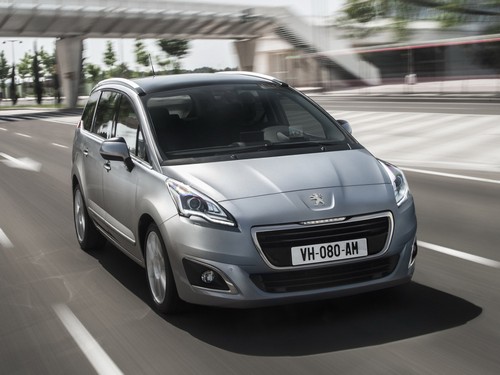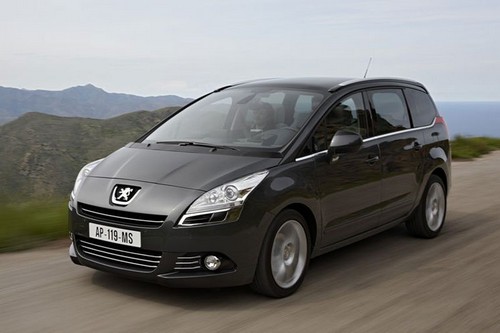peugeot 208 1. gen 2012-2019 – polovnjak, experiences, problems
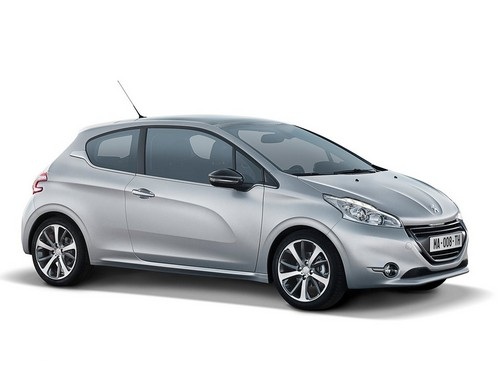
- Model : peugeot 208 1. generation
- Year of manufacture: 2012 – 2019
- redesign: 2015
- manufacturer: Peugeot
- Prthodnik: peugeot 207
- Naslednik: peugeot 208 2.genercija
- Grade: city car
- Kolnkurenti: Renault Clio, Skoda Fabia, Volkswagen Polo, Hyundai i20, Citroen C3, Kia Rio
- Modeli: hatchback from 3 i 5 doors
- euro NCAP: ★★★★★ (2012)
peugeot 208 1. gen. from the beginning he had no easy task. He had to be even better than the successful predecessor 207, is compared to 206 was a clear qualitative leap. Although he lost centimeters in length, width and height of the body, it was possible to develop sufficiently spacious interior for comfortable transport four people. The trunk is slightly increased, but his 285 l no longer gives the impression of class competitors. “208” is offered only as a hatchback with 3 ili 5 doors. 2015. year, city Peugeot 208 1. generation has been subjected to a lesser modernization, wherein introducing new drive unit BlueHDi.
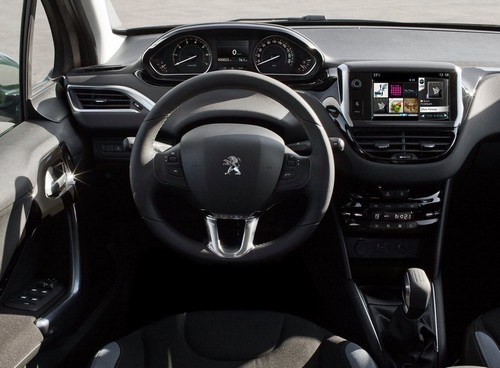
After entering the Peugeot 208, immediately visible small wheel. Its diameter is only 32-34 cm and is mounted so that it covers indicators placed above it. Although this solution initially caused controversy, in practice by customers warmly accepted. The steering wheel is excellent in hands, and its size is appreciated when parked in a tight space,.
Peugeot 208 has more space inside. This is particularly noticeable for rear passengers, a space in the knees plus 5 cm. .
peugeot 208 1. gen – Engines
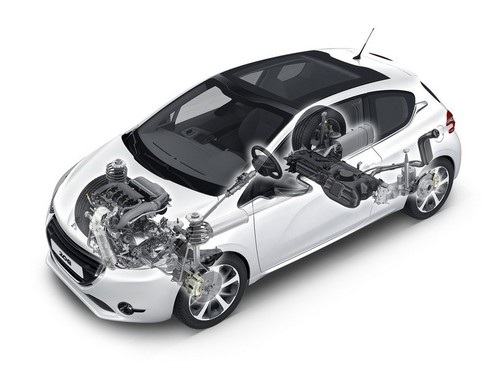
Series engine Peugeot 208 opens base engines 1.0 i 1.2 VTi / PureTech snage 68 i 82 KS, and later 110 KS u 1.2. They have 3 cylinder and the poor performance of, but are considered to be very reliable, a 1.2 also have vibration. Do 2015. year were used and motors 1.4 i 1.6 VTi chain. They are usually known for problems with faulty chain tensioner, or replacement will not cost a lot, provided that respond to weather and do not underestimate the disturbing noises around the engine. The most powerful variant “208” also works 1.6 THP, reaches even 200 KS (GTi). As for diesels, they are almost free of defects and are satisfied with the small amounts of fuel. Engines 1.4-1.6 HDi / e-HDi, later BlueHDi have more than 100 horses and surprisingly alive.
Manual transmissions have five or six degrees. The five-speed gearboxes with a design based on the 1980s, less precise shifting and a significant departure in the end positions. Positive proven design is solid and lasting reliability. On the other side, six-speed manual is much more modern in design, which means easy and more precise switching speed. Very rarely are vehicles with robotised gearbox (1.2 VTi, 1.4 e-HDI i 1.6 e-HDi 68 kW). to 1.6 VTi engine, There is also the possibility of the classic four-speed automatic gearbox, which is rarely to be found.
peugeot 208 1. gen. – Problems and failures
generally, Peugeot 208 can be evaluated as a vehicle with solid reliability, particularly in simpler versions with less powerful engines. U početku je elektronika bila dosadna, ali to je otklonjeno, and problems are rarely encountered, including the first year of production.
The vehicle is very well protected against corrosion, except exhaust pipe. last part (sometimes carriers) have extra long life, especially for vehicles powered by gasoline, which often run short routes.
Kod dizel motora koji se koriste gradskoj vožnji stvaraju se naslage u DPF filteru i EGR ventilu. The vehicle is unable to make an effective regeneration of the filter during city driving. If the recovery does not work in a timely period, filter can become irreparably blocked, which leads to the high cost of replacement.
Diesel engines 1.4 i 1.6 e-HDi, solenoid valves with turbocharger canceled.
at 1.4 HDi diesel engines, all several owners complained to quickly wear clutch.
some 1.6 e-HDi diesel engine, Drivers complain of jigging when starting the engine. The problem is often solved reprogramming the engine electronics, which is responsible for managing Injector.
to 1.4 / 1.6i VTi 1.6 THP engine, There is typically a problem with the Timing chain tug, and sometimes with poor hydraulic tensioner. In addition to greater noise (clanging sound), uneven work, unwillingness of the engine that pulls. And a warning light engine failure, pojavljuju se u razvodnom mehanizmu prekomerni zazori i šalju se netačne informacije sa senzora pozicije elemenata motora ka upravljačkoj jedinici motora. Failure to do so may skip chain, which in some cases causes a malfunction of ignition.
VTi petrol engines (1.4 / 1.6 VTi) mogu povremeno iskusiti problem sa solenoid ventilom regulacije VVT mehanizma promenljivog vremena otvaranja ventila, that, in addition to lights engine failure, shows the engine shut down, loss of strength or sudden acceleration. There is also a failure bobbins, manifested uneven engine operation, twitching, poor start and so on. Early replacement of spark plugs helps to prevent the breakdown of bobbins. It is recommended at the latest after 50.000 km, it is advisable to replace the spark plug after 30.000 km, If you ride more often on shorter routes (around the city). If the engine is problematic, camshaft position sensor can also be broken. periodically, warning light engine and increase spending, manifested faulty oxygen sensor, which is reported as a frequent failure to vehicles used on shorter routes.
To 1.6 THP motorom, over time, there is excessive soot deposition, especially in the inlet and on intake valves. This is the recirculation of gases containing particulates, and oil mist that penetrates the vacuum system through the ventilation system of the crankcase, and around the piston rings, which are characterized by fine design and low pressure for minimum friction loss. Such oil mist then karbonizuje and gives the engine soot. In addition to the intake and intake valves, and the soot is deposited in the combustion chamber. Together with deposits on intake valves, soot deposits in the combustion chamber causes the so-called. detonativnog combustion. In fact, when the engine is running, gradually heated to a high temperature and cause self-ignition of the injected fuel. The knock sensor detects these events and sends a pulse to the control unit, which in turn reduces the angle of ignition to prevent explosion. A mixture of fuel later on and worse and does not transfer all its energy. As a result,, less and less power, as well as increased consumption. The long-term problem detonativnog combustion, clips are broken and the engine is damaged. Especially weaker versions of 115 kW su pod uticajem formiranja više čađi. More powerful versions (147 kW 153 kW) a variable valve timing Outlet, which significantly changes the flow characteristics of exhaust gas, resulting in significantly reduced formation of soot in the intake ducts and valves.
As a preventive increase soot formation, recommended adding quality additives for cleaning or better yet add fuel additive prescribed by the manufacturer. In addition to cleaning, This additive also eliminates the deposition of carbon. However, it is important that this additive is used regularly (recommended every fifth tank), a one-time or short-term use there is no significant effect. With highly soiled engine, such a cleansing treatment has no effect. From the point of view of driving, it is preferable to use the engine for longer trips and not ride often at low speeds. Driving on short routes with a cold engine increases the production of soot. It is important to, also, After the oil change 15.000 km / 1 years, in the case of frequent driving in the overload (more powerful version) even earlier.
Occasionally there is a problem with a defective sensor, coolant temperature on 1.6 THP engines, which leads to the engine warms up to operating temperature. Sometimes whole thermostat does not work together with the sensor. Sometimes failure el. control turbocharger (motor) which results in reduced engine power. In case of 208 GTi, 1.6 THP engine may have cracked turbocharger housing – power loss, which can be solved only in exchange for a second turbine.
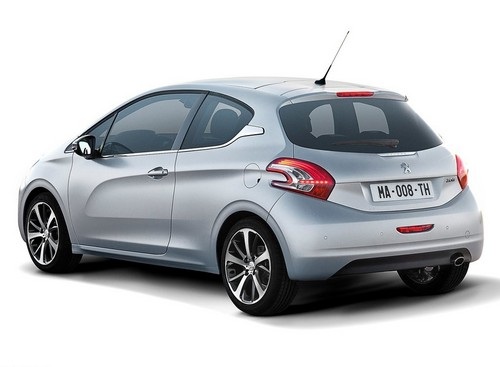
With greater mileage (relations on all engines) there is a leak of coolant. This leakage is mainly caused by leakage (weathered) water pump.
at diesel engine recommended charging diesel and fuel filter changed regularly. The larger the number of impurities contained in diesel fuel, fuel filter resulting in slower acceleration or loss of power at higher speeds. Of course, more impurities also constitute a risk for drug delivery devices which can become blocked by, what resulting comforted by starting or improper operation of the engine. They will often help injector to professionally clean, but sometimes cleaning will not help and replacement is necessary.
Na 1.6 HDi, the oil container misfolded, can not discharge all deposits, so it is recommended that frequent changes of oil (max. 15.000 km better 10.000 km) i s vremena na vreme (at least once every 100.000 km) correctly disassemble and clean the oil pan. otherwise, deposits that remain at the bottom of the sump dirty new oil, which has a detrimental effect and causes a faster wear of engine components.
The higher mileage diesel engines can mean excessively worn injectors, resulting in uneven and noisier free wheel, poor cold start, weaker performance, full power (excess oil) and fall. With greater mileage, also need to pay attention to excessive vibration at idle, unfair activate the starter clutch or noise at low speed. At that time, probably will blame excessively worn floating momentum.
In the case of diesel engines, life of the particulate filter (FAP) varies depending on how the vehicle is used, but usually around 200-250.000 km. Sometimes the life of the filter larger, but sometimes smaller, especially if they are driven by shorter paths more frequently when the filter is not regenerated well. Functioning EGR circuits, injection system, turbocharger and the engine influence the life of the filter. Problems with filter usually occur by burning lamp indicator and move the engine in safe mode. Nearing the end (occlusion) filter DPF is usually reported an increased frequency of regeneration along with a slight increase of consumption. It should also be borne in mind that FAP filter needs a special additive for their work, which is supplemented after about 80-100.000 km.
In the case of robotized gearbox, in addition to faster wear clutch, is required and service intervention. Recalibration switching mechanism which is due to gradual wear of the tread. In most attack may occur mechatronic failure, as well as excessive foot beds or worn gear, and detecting an excessive amount of scrap metal in oil.
Sensitive lacquer car shock slag with times.
For the three-door version, contact attention to the work mechanism of the front seats that can break due to frequent use.
The number of problems in managing multimedia interface in earlier versions (impossibility Control via the touch screen, Bluetooth veze, poor radio reception, poor GPS reception, etc.), What is largely eliminated by upgrading software in 2014. year.
Peugeot 208 1. gen. – service
Oil change interval specified by the manufacturer to 25.000 km ili. 1 year, whichever comes first. However, recommended to shorten the change interval at max. 15.000 km. 1 year, in case more often driving around town or increased load to the max. 10.000 km / 1 years. petrol engines 1.0, 1.2 i VTi 1.2 PureTech have toothed belt with the interval of replacement 180.000 km / 10 years, diesel HDi to 240.000 km / 10 years. However, recommended that the toothed belt changes to the max. 160.000 km. 8 years. 1.4 VTi, 1.6 i VTi 1.6 THP engines are chain stores as distribution mechanism with no specified intervals replacement and change only in case of problems (rattling etc.). The air filter should be changed Max. after 30.000 km, or better with every oil change, filter cabin – pollen every year and changing the fuel filter is recommended to be changed every 50.000 km HDi motore. In the case of petrol engines, recommended to replace the spark plug at the latest after 50.000 km, thereby eliminating the risk of damage to the bobbin.
peugeot 208 price polovnjaka - Review polovnjaka
peugeot 208 1. gen. – Technical data
Peugeot 208 – dimensions
| Lenght width height | 397/174/146 cm |
| Wheelbase | 254 cm |
| Luggage capacity | 285-1076 l |
Peugeot 208 – gasoline engines
| Motor | 1.0 VTi | 1.2 PureTech | 1.4 VTi | 1.6 VTi | GTi |
| Volume | 999 CCM | 1199 CCM | 1397 CCM | 1598 CCM | 1598 CCM |
| fuel | gasoline | gasoline | gasoline | gasoline | turbo gasoline |
| Max. power | 68 KS | 82 KS | 95 KS | 120 KS | 200 KS |
| Max. torque | 95 Nm | 118 Nm | 136 Nm | 160 Nm | 275 Nm |
| acceleration 0-100 km / h | 14,0 s | 12,2 s | 10,5 s | 8,9 s | 6,8 s |
| Top speed. | 163 km / h | 175 km / h | 188 km / h | 190 km / h | 230 km / h |
| Average consumption | 4,3 l / 100 km | 4,5 l / 100 km | 5,6 l / 100 km | 5,8 l / 100 km | 5,9 l / 100 km |
Peugeot 208 – diesel engines
| Motor | 1.4 HDi | 1.6 HDi | 1.6 HDi |
| Volume | 1398 CCM | 1560 CCM | 1560 CCM |
| fuel | turbo-diesel | turbo-diesel | turbo-diesel |
| Max. power | 68 KS | 92 KS | 114 KS |
| Max. craft moment | 160 Nm | 230 Nm | 270 Nm |
| acceleration 0-100 km / h | 13,5 s | 10,9 s | 9,7 s |
| Max. speed | 163 km / h | 185 km / h | 190 km / h |
| Average consumption | 3,8 l / 100 KS | 3,8 l / 100 KS | 3,8 l / 100 KS |

Hi there, I am Mladen and I am an auto enthusiast. I started this blog years ago to help like minded people share information about latest cars, car servicing ideas, used car info, exotic cars, and auto technology. You will find helpful articles and videos on a wide variety of cars – Audi, Mercedes, Toyota, Porsche, Volvo, BMW and much more. Ping us if you have anything cool to share on latest cars or on how to make older cars more efficient, or just want to say hi!

